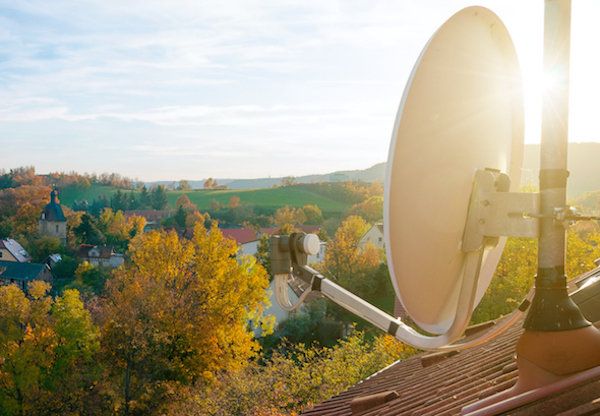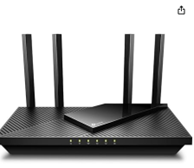Get better internet performance right now with these simple tricks
10 Easy Ways to Speed Up Your Internet Connection
We rely on the internet for everything, from Zooming into an important work meeting to watching old episodes of The Office. In our hyper-connected world, slow internet just isn’t going to cut it.
Even households with the fastest internet providers can experience sluggish speeds. Thankfully, there are some things you can do to boost your internet speeds immediately.
We’ll highlight 10 easy ways that experts say you can speed up your internet. Our list is broken into two sections: quick fixes and equipment upgrades. So let’s get into it.
Guide to speeding up your internet:
Let’s start with a speed test
Before we dive into our solutions for boosting your internet speed, let’s see what we’re working with here. See how many megabytes per second you’re getting with our handy speed test, and return here. What did it say?
If you’re seeing slower speeds than you normally get, then most of the solutions that we talk about below should help out. But if you’re seeing really fast speeds (of 100Mbps or more) on the test and still feel like your connection isn’t working properly, then the problem might be with the server you’re trying to connect to or the program you’re trying to use.
Now, let’s talk about how to boost your internet speeds. We’ll start with the easiest and quickest solutions.
Quick fixes for faster internet
Most issues with internet speed can be solved in less than five minutes with one or two of these quick fixes.
1. Restart your modem and router
We know it’s a cliché at this point, but restarting your equipment can clear up many issues. Restarting your router allows it to clear its memory and reload the firmware. First, you’ll need to locate your modem and router. They are usually close to each other, by the wall where your cable/fiber/or DSL cord comes into your home. Many people will have a modem/router combo that serves both functions.
How to restart your router:
- Unplug your router and modem.
- Wait thirty seconds.
- Plug the devices back in.
Your internet will go out while the devices are unplugged. It may take several minutes to come fully back online after you reconnect. So, be sure that no one is in the middle of an important conference call (or game of Modern Warfare) when you restart.
Once your internet is back online, it should be a little bit faster. It might not be enough to boost your speeds from 5Mbps to 100Mbps, but it could mean the difference between watching Netflix in SD or HD.
It’s one of the oldest tricks in the book, but it really can help. You should reset your modem and router every few months just to keep them running as fast as possible.
2. Reposition your Wi-Fi router
Your Wi-Fi router is what sends the internet from your modem to your computer, TV, phone, and other devices. It’s like other wireless devices: If you’re too far away, then the signal will get weak or go out completely.
Try moving your devices closer to the Wi-Fi router or moving your Wi-Fi router to a more central location.
The closer you are to the Wi-Fi router, the faster your internet should be. If you cannot move your router because it’s connected to your modem or to the internet cord, then you may need to buy a longer cord or an extender device, which we’ll talk about a little further down in this list.
3. Change to another Wi-Fi band
Another way to get a faster connection to your Wi-Fi router is by switching the band.
Most modern Wi-Fi routers are dual-band routers, which means that they have two separate frequencies that you can connect to. There is usually a 2.4 GHz frequency and a 5 GHz frequency. You may notice that you have two different Wi-Fi networks, one of which says “5G” next to it (that’s the 5 GHz band).
In general, 5 GHz bands offer faster speeds, but have a shorter range. Meanwhile, 2.4 GHz bands have slower speeds, but can reach much further. So, if you’re trying to get the fastest possible internet speeds, then switch to the 5 GHz Wi-Fi band.
Just remember, 5 GHz bands have less range, so you may need to move closer to your router. Also, if all of your devices are on one band, it can clog the signal. So it’s smart to keep devices that don’t need superfast speeds—like smart speakers or appliances—on your 2.4 GHz band.
If you don’t see two separate bands on your list of Wi-Fi networks, then you may need to set up another band or buy a newer router. To do this, you may need to call your internet service provider (ISP) or look for the instructions for your specific device.
4. Clean up your computer and other devices
If you’ve ever dealt with a slow computer, then you know that closing programs and background applications can help it go faster. Well, it’s the same with your internet connection. A few simple actions on your computer or other device can help speed it up.
Here are a few tips:
- Get an ad-blocker: All of those video ads and pop-ups are annoying, of course. But they also slow down your internet because they use up your bandwidth. Getting a simple, free ad-block extension on your browser can boost your speeds.
- Close your tabs: Having a bunch of browser tabs open can drain your internet speeds.
- Close programs that you’re not using: If you’re always connected to Discord or have an app on your phone that’s constantly refreshing to look for new notifications, that uses bandwidth.
- Run an anti-malware check: Run your device's antivirus program to clean up any lurking malware that may be tracking you (and using your internet connection to do so).
- Turn off your VPN: VPNs are great for staying secure and private on the internet. But even the best VPNs will slow your speeds a little bit.
5. Get rid of Wi-Fi leeches
Your internet connection is like a pizza and each device that’s connected to it is like a hungry person at your party. The more people there are, the less pizza for you.
Some Wi-Fi routers have an app that will allow you to see exactly what devices are connected to your network. This makes it easy to see if there are any unknown connections (like your neighbors who somehow guessed your password). You can also use third-party apps like Fing.
But the easiest way to clear up Wi-Fi leeches is to reset your password and then manually reconnect only the devices you want.
6. Update your firmware on computer and router
Unless you’ve got a brand new Wi-Fi 6 router, you may need to check for firmware updates to make sure that your device is running at peak performance. Firmware is the software that helps your router run (basically its operating system).If it's outdated, then your device may run slow or be vulnerable to hackers.
Updating your router’s firmware is relatively easy.
- Type your router’s IP address into your web browser. If you don’t know how to find your router’s IP address, then just google it. The steps are different depending on what device you’re using.
- Enter your login information. If you don’t know what this is, contact your ISP or look for default login info on the back of your router.
- Find the Update or Firmware section in your device’s settings and make sure that automatic updates are turned on.
- You may need to download the latest firmware updates directly from the router manufacturer’s website.
Also, your computer and other devices require special drivers for Wi-Fi receivers and other internet-related parts. These drivers should be updated automatically, but you can manually update them in your computer settings.
7. Call your internet service provider
Ideally, you can trust your ISP to be giving you the internet speeds that you pay for. But, let’s be honest, we all know that these companies are pulling some strings from behind the scenes. ISPs can definitely throttle customers' speeds. Sometimes this happens because you’re using too much data, but sometimes there’s no particular reason.
If your internet speeds are consistently slower than what you pay for, call your ISP and complain. You can even threaten to switch to another provider.
Where I live, Xfinity is pretty much the only high-speed internet provider in town. I frequently have to get on the phone with them (yes, it’s a pain) to complain about sluggish speeds. It always magically leads to a speed boost (for a few days at least).
Equipment changes that can boost your internet speeds
Those seven simple fixes should help you boost your internet speeds without spending a dime. But, if you really want to get more consistent results, you may need to make a few small, long-term investments.
8. Switch to a direct connection with an Ethernet cable
Wi-Fi routers are great. They allow dozens of devices throughout your entire house to connect to the internet at once. But they will never be as fast as a direct connection.
You can plug your devices directly into your router using an Ethernet cable. This will not disrupt Wi-Fi service for your other devices, but it will give you a reliable and fast connection. We highly recommend a direct connection for your gaming systems, TV, and other devices that you use to stream, video conference, or do other demanding online activities.
You may already have an Ethernet cable available sitting in that box of old cords in your basement. If you don’t have one, you can get a cheap 10-foot Ethernet cable on Amazon.
9. Get a Wi-Fi extender
If you’re trying to get a better internet connection in a part of your house that’s far away from your router, you may want to get a Wi-Fi extender. These simple and affordable devices can plug into any electrical outlet and boost your signal significantly.
We like this powerful dual-band Wi-Fi extender from TP-Link that costs less than $20.
10. Upgrade your router
If you’re using a cheap router that you bought five years ago or using the one that your ISP rents to you for $10 a month, then it might be time for an upgrade. Investing $50 or $100 now could greatly increase your speeds and payoff in the years to come.
There are many considerations when buying a new router. But the main things to think about are:
- Wi-Fi type: There are different Wi-Fi standards that dictate how fast your connection is. You may have seen these expressed as numbers, like 802.11be or 802.11ax. But most people just refer to them as Wi-Fi 5, Wi-Fi 6, etc. The latest standard is Wi-Fi 7, but most households will be just fine using a Wi-Fi 6 router.
- Range: Routers with big antennas and multiple bands can have wider ranges than others. But if you really want to boost the range of your Wi-Fi network, then you’ll want to get a mesh system that has multiple network nodes, like this one from Google.
- Price: You can get a perfectly good Wi-Fi 6 router for under $100. But if you’ve got money to spend, then we’d recommend shelling out a couple hundred for a mesh system.
- Combo devices: Getting a router and modem combo device can make your life simpler, but it can also hold you back. If you get a combo device with your current internet provider, but decide to upgrade to, let’s say, a fiber internet service in the future, then your device may no longer work. But if you get a standalone router, then you won’t have that problem. (Routers will work with any type of internet, but not all modems will.)
That’s a lot to think about. If you just want an affordable, one-size-fits-all Wi-Fi router, then we recommend the TP-Link AX1800 WiFi 6 Router.
Maybe it’s time to upgrade your internet service
Hopefully these quick fixes have helped you speed up your internet. But if you’re still plagued with low-quality video, laggy games, and long load times, then you should probably switch ISPs.
We’ve done a deep dive into the fastest internet providers in the country. We looked at data from thousands of real customers to determine the actual speeds that different companies provided (as opposed to the advertised speeds). Here’s a glance at some of the results.
Related Articles









